calsfoundation@cals.org
Endemic Biota
An endemic species is any organism that is indigenous to a restricted or defined geographical area. Arkansas has a diverse variety of endemic biota, including fungi, plants, and animals. By 2017, there were about 139 endemic species in the state, most found in the Interior Highlands (Ouachita and Ozark Mountains).
A combination of biological, climatic, and/or physical factors contribute to endemism. Some species are found in specific geographical or physiographic regions of the state, such as the Gulf Coastal Plain or Interior Highlands, whereas others may be restricted to specific sites in river drainages. Around the world, endemic species can also be found in geographically and biologically isolated areas such as islands and remote island groups, such as the Galápagos and Hawaiian islands. They can also develop in biologically isolated areas such as large bodies of water far from other lakes, such as Lake Baikal in Russia.
Endemic species are prone to extinction due to their geographic isolation. If their restricted habitat changes—particularly due to human negative interventions, including the introduction of invasive biota—endemic species are doomed. Although most people think Arkansas may be less prone to invasions by animals, plants, and diseases than coastal states, invasive species arrive in the state by trade, through wind dispersal, highways, rail, and mechanical removal. Major causes of habitat degradation and loss in highly endemic ecosystems include agriculture, cave exploration and vandalism, logging operations, mineral extraction, surface mining, and urban growth.
Examples of invasive plant species that can affect Arkansas endemic species include the diatom didymo (Didymosphenia geminata), kudzu (Pueraria sp.), hydrilla (Hydrilla verticillata), tall fescue (Festuca arundinacea), and water hyacinth (Eichhornia crassipes).
The zebra mussel, in Arkansas since at least 1992, is native to the Black, Caspian, and Azov Seas and can remove so much biomass from a watershed that they harm other aquatic species, including fishes. Native and endemic fishes can be harmed by the northern snakehead (Channa argus), an invasive predator that was discovered in Arkansas in 2008 at Big Piney Creek near Brinkley (Monroe County) and has since spread to other watersheds. Other non-native fishes include Asian carps (bighead, black, and silver).
Historically, there were no works on a summary of the endemic flora and fauna of Arkansas until 1974, when the first compilation was completed; only nine species were documented. Since then, several updates have been published. In 1982 and 1988, the next two summaries were published, and they listed forty-seven and eighty-five endemic taxa, respectively. In the 1995 University of Arkansas Press book Only in Arkansas: A Study of the Endemic Plants and Animals of the State, 117 endemic species were documented, and, more importantly, extensive illustrations and photographs of each species were included. It also provided pertinent literature references to the original distributions of each form within the state and documented what was known of the general biology, evolutionary relationships, and habitat occupied by each endemic form. Due to the discovery of several former endemic species in other states, the next report in 2008 reduced the list to 113, and another update increased the number by thirteen to 126 the following year in 2009. The latest update (2015) brought the number of endemic species in the state to 139 taxa and added, for the first time, six endemic fish monogenean parasites found only in Arkansas.
Endemic Fungi
Three endemic species of fungi have been reported from the state: a xeruloid mushroom (Hymenopellis sinapicolor) has been found only at Lake Sylvia Recreational Area of Saline County; Dictyostelium caveatum (a cellular slime mold) is known from Blanchard Springs Caverns in Stone County; and Cryptovalsaria americana was reported from the Ouachita Mountains Biological Station in Polk County.
Endemic Plants
There are a number of endemic plants from the state. For example, a liverwort, Fossombronia marshii, was reported from sandy soil in an openly mowed grassy area at Ebenezer United Methodist Church in Stephens (Ouachita County). Interestingly, it is the first dioecious (meaning having the male and female reproductive organs in separate individuals) species of this genus to be documented from North America. Others include Pelton’s rose-gentian (Sabatia arkansana) from Saline County glades; blazing star (Liatris compacta), endemic to a portion of the Ouachita Mountains; clasping twistflower (Streptanthus maculatus obtusifolius) from Faulkner, Garland, Hot Spring, Howard, Montgomery, Polk, Pulaski, and Saline counties; Moore’s delphinium (Delphinium newtonianum) from Johnson, Montgomery, Newton, Pike, Polk, Pope, Searcy, and Van Buren counties; maple-leaf oak (Quercus shumardi var. acerifolia), endemic to Mount Magazine in Logan County, Pryor Mountain in Montgomery County, Sugarloaf Mountain in Sebastian County, and Porter Mountain in Polk County; Browne’s waterleaf (Hydrophyllum brownii) from Garland, Howard, Montgomery, Pike, Polk, Saline, Sevier, and Yell counties; and Cossatot leafcut (Polymnia cossatotensis) found in Montgomery and Polk counties.
Endemic Monogenean Parasites
There are seven species of endemic monogenean (fish gill parasites) found on cyprinid and percid fishes from the state: Aethycteron robisoni on the sunburst darter; Etheostoma milhileze, from Benton and Franklin counties; Dactylogyrus asper, reported to be found on the redspot chub (Nocomis asper) from Spavinaw Creek in Benton County; Dactylogyrus boopsi on the bigeye shiner (Notropis boops) from Franklin, Fulton, and Newton counties; Dactylogyrus greenei on the wedgespot shiner (Notropis greenei) from Franklin, Johnson, and Perry counties; Dactylogyrus latrictus on hornyhead chub, Nocomis biguttatus, from the White River at Sylamore (Izard County); Dactylogyrus robisoni on bluehead shiner (Pteronotropis hubbsi) from Locust Bayou in Calhoun County; and Gyrodactylus bretinae from the speckled darter (Etheostoma stigmaeum) from the William H. Donham State Fish Hatchery at Corning (Clay County).
Endemic Animals—Segmented Worms (Phylum Annelida)
Two endemic earthworms—Diplocardia meansi known only from its type locality on Rich Mountain in Polk County and D. sylvicola from Dallas, Garland, and Polk counties—have been reported from the state. Interestingly, D. meansi is the second-longest worm found in North America, and it is bioluminescent.
Endemic Animals—Mollusks (Phylum Mollusca, Class Gastropoda)
There are a number of endemic snails from the state, including the Ouachita pebblesnail (Somatogyrus amnicoloides) from Clark County, thicklipped pebblesnail (S. crassilabris) from Baxter County, and channeled pebblesnail (S. wheeleri) from Clark County; the former and latter species may be extinct, however, due to pollution caused by reservoir discharges. Other snails include Amnicola cora, the Foushee cavesnail, endemic in one of the longest known cave systems in Arkansas, Foushee Cave in Independence County; Paravitrea aulacogyra, the Straite supercoil, known only from Mount Magazine in Logan County; Daedalochila peregrina, the white lipstooth, from Carroll, Izard, Marion, Newton, Searcy, and Stone counties; Patera clenchi, the Calico Rock oval, from Izard, Searcy, Scott, and Yell counties; Inflectarius magazinensis, the Mount Magazine shagreen, from Magazine Mountain in Logan County, which is particularly sensitive to any habitat alteration; Daedalochila bisontes, the Buffalo River liptooth, from Madison, Newton, and Searcy counties; the Arkansas wedge (Xolotrema occidentale) from Independence and Stone counties; and the Ozark pyrg (Marstonia ozarkensis), known only from the type locality in Baxter County. Most of these snails are afforded protection in the state, and all but D. bisontes, is considered a species of greatest conservation need by the Arkansas Game and Fish Commission (AGFC).
Endemic Animals—Mussels (Class Bivalvia)
Seventy percent of North America’s mussels are either extinct or endangered. There are several reasons for their decline, including the need for clean water with little silt load. Logging, river impoundments, agricultural run-off, shoreline development, and other disturbances have largely eliminated the clean, swift-flowing currents that freshwater mussels must rely on. In Arkansas, there are two endemic species: the federally endangered speckled pocketbook (Lampsilis streckeri) found only in the Little Red River system in Stone and Van Buren counties; and the Arkansas Fatmucket (Lampsilis powellii) found in the upper Ouachita River system in Polk and Montgomery counties, along the Caddo River in Montgomery, Pike and Clark counties, at Lake DeGray in Hot Spring County, along the North, Alum and Middle Forks Saline River in Saline County, and along main stem Saline River in Grant County.
Endemic Animals—Amphipods and Isopods (Subphylum Crustacea)
The elevated spring amphipod (Stygobromus elatus) is known only from Mount Magazine in Logan County, and the Mountain Cave amphipod (S. montanus) is a Rich Mountain endemic from Polk County. Both are considered species of greatest conservation need by the AGFC.
The first troglobitic asellid from the Ouachitas, the Abernathy Spring isopod (Caecidotea fonticulus), is known only from this unique spring in Polk County; C. holti (no common name [NCN]) is known only from Perry County; Lirceus bicuspidatus (NCN) inhabits a variety of springs, seeps, and streams to cave streams in Conway, Jackson, Johnson, Logan, Newton, Pope, Pulaski, Searcy, and Yell counties; and L. bidentatus (NCN) is from a single seep in the Boston Mountains in Boone County. All of these isopods, except C. holti, are species of greatest conservation need.
Endemic Animals—Crayfishes (Class Decapoda)
There are eight endemic crayfish species in Arkansas, including the Bayou Bodcau crayfish (Bouchardina robisoni) from Columbia, Hempstead, Howard, Lafayette, and Nevada counties; Boston Mountains crayfish (Cambarus causeyi) from Franklin, Johnson, Madison, Newton, Pope, Searcy, and Stone counties; Hell Creek Cave crayfish (C. zophonastes) from Hell Creek and Nesbitt caves in Stone County; Jefferson County crayfish (Creaserinus gilpini) from Cleveland and Jefferson counties; Ouachita burrowing crayfish (Fallicambarus harpi) from Garland, Hot Spring, Montgomery, and Pike counties; slenderwrist burrowing crayfish (F. petilicarpus) from Columbia and Union counties; Saline burrowing crayfish (F. strawni) from Howard, Pike, and Sevier counties; and redspotted stream crayfish (Faxonius acares) from Clark, Garland, Hot Spring, Montgomery, Perry, Pike, Polk, and Saline counties. Each of these crayfish is considered a species of greatest conservation need, except C. zophonastes, which is a federally endangered species.
Endemic Animals—Spiders, Harvestmen, and Pseudoscorpions (Phylum Arthropoda, Class Arachnida)
An endemic troglophilic spider, Neoleptoneta arkansa, occurs in Blanchard Springs Caverns in Stone County. There are two endemic harvestmen, Crosbyella distincta (an eyeless obligate cavernicole) and C. roeweri (an eyed troglophile), from Boone and Benton counties, respectively. Also, there are two endemic obligate cavernicole pseudoscorpions from Arkansas, including Apochthonius diabolus from Devil’s Den State Park in Washington County and A. titanicus from Blanchard Springs Caverns in Stone County. All of these taxa are considered species of greatest conservation need by the AGFC.
Endemic Animals—Millipedes (Class Diplopoda)
There are numerous endemic millipedes in the state. They include those in the genera Abacion, Aliulus, Boraria, Causeyella, Chaetaspis, Cleidogona, Nannaria, Okliulus, Pleuroloma, Petaserpes, Tiganogona, and Trigenotyla, and several in the genus Eurymerodesmus. Three species of obligate cave inhabitants are endemic, including the eyeless and unpigmented Causey’s cave millipede (Causeyella causeyae) that occurs within ten caves in Independence, Izard, and Stone counties; Trigenotyla parca from subterranean habitat in Carroll County (species of greatest conservation need); and Chaetaspis attenuatus from Cushman and Clay Caves in Independence and Izard counties. Another interesting millipede that occurs nowhere else on earth is Abacion wilhelminae, found only at a few specific sites on Rich Mountain; it is a species of greatest conservation need.
Endemic Animals—Two-Pronged Bristletails (Class Insecta, Order Diplura)
There are several endemic species of diplurans in the state, including Catajapyx ewingi from Howard County, Occasjapyx carltoni from Independence and Newton counties, Podocampa inveterata from Logan County, and Clivocampa solus from north-facing slope of Mount Magazine in Logan County.
Endemic Animals—Springtails (Order Collembola)
Three species of springtails are endemic in the state. Typhlogastrura fousheensis is endemic to Foushee Cave in Independence County; it is found there on bat guano. Two species of Pygmarrhopalites are found in caves in Newton County near the Buffalo River—P. youngsteadtii occurs in Tom Barnes Cave, and P. buffaloensis is found in Walnut Cave.
Endemic Animals—True bugs (Order Hemiptera)
A single endemic true bug, the lacebug (Acalypta susana), has been reported from Mount Magazine in Logan County, a site in Polk County, and another site at Steel Creek near the Buffalo River in Newton County.
Endemic Animals—Beetles (Order Coleoptera)
Several endemic species of carabid (ground) beetles have been reported from Arkansas. They include Scaphinotus parisiana from Logan and Washington counties, S. infletus from Newton County, Rhadine ozarkensis from Fincher Cave in Washington County, and Evarthrus parasodalis from Conway, Franklin, Garland, Montgomery, and Washington counties. Short-winged mold beetles are endemic in the state and include Arianops sandersoni from Mount Magazine in Logan County, A. copelandi from Pinnacle Mountain in Pulaski County, and Ouachitychus parvoculus, also from Mount Magazine. A single endemic leaf beetle, Pachybrachis pinicola, is known from Nevada County. There are two endemic predaceous diving beetles, Heterosternuta ouachitus from Izard, Newton, Randolph, Searcy, and Sharp counties, and H. sulphuria from Benton, Izard, Newton, and Washington counties. An endemic staphylinid cave beetle (Speleochus blanchardensis) was found in Blanchard Springs Caverns in Stone County. A cave pselaphine (Speleochus macosar) was described from Whippoorwill Cave in Madison County, and a new endemic anilline ground beetle (Anillinus alleni), also from Blanchard Springs, was described.
Endemic Animals—Stoneflies (Order Plecoptera)
Several endemic stoneflies occur in Arkansas, most only from their type locality. They include Allocapnia warreni from Washington County, A. ozarkana from Madison County, A. oribata from Searcy County, Alloperla ouachita from Hot Spring and Montgomery counties, A. caddo from Garland and Perry counties, Isoperla szczytkoi from Logan County, Zealeuctra wachita from Polk and Scott counties, and Leuctra paleo from Columbia and Dallas counties.
Endemic Animals—Caddisflies (Order Trichoptera)
Paucicalcaria ozarkensis is an endemic caddisfly from Gutter Rock Creek on Mount Magazine in Logan County. Others include Agapetus medicus from Benton, Clark, Hot Spring, Pike, and Polk counties; Helicopsyche limnella from Benton, Clark, Crawford, Franklin, Garland, Hot Spring, Johnson, Madison, Montgomery, Polk, Saline, and Washington counties; and Cheumatopsyche robisoni and Lepidostoma lescheni, the former found at sites in Garland, Montgomery, and Polk counties, and the latter collected from Mount Magazine in Logan County.
Endemic Animals—Flies (Order Diptera)
A single endemic fly is found in the state. The robber fly (Atomosia arkansensis) was found at Grandview Prairie Wildlife Management Area in Hempstead County.
Endemic Animals—Wasps and Bees (Order Hymenoptera)
An endemic parasitoid wasp, Idris leedsi, was reported from Baker Spring in Johnson County. It is a parasitoid of eggs of various spiders.
Endemic Animals—Fishes
Two madtom catfishes, the Ouachita madtom (Noturus lachneri) and Caddo madtom (N. taylori), are endemic to the Upper Saline and Ouachita river drainages of Garland, Hot Spring, and Saline counties, and the Caddo, Upper Ouachita, and Little Missouri rivers of the Ouachita River drainage in Montgomery, Pike, and Polk counties, respectively. Several darters, including the beaded darter, Etheostoma clinton (named after President Bill Clinton), described from specimens collected in the upper Ouachita and Caddo rivers; paleback darter (E. pallididorsum) from the upper Caddo and Ouachita rivers of Garland, Montgomery, and Pike counties; the federally endangered yellowcheek darter (E. moorei) restricted to the upper Little Red River drainage above Greers Ferry in Cleburne, Searcy, Stone, and Van Buren counties; the Strawberry Darter (E. fragi), part of the E. spectabile complex, is found only in Fulton, Izard, Lawrence, and Sharp counties; and the Ouachita Darter (Percina brucethompsoni) is endemic to the upper Ouachita River system in Clark, Montgomery, Pike, and Polk counties. Each fish (except E. moorei) is considered a species of greatest conservation need.
Endemic Animals—Amphibians
Two endemic salamanders of the woodland Plethodon complex are found in forest communities of the Ouachita Uplift of western Arkansas. The Fourche Mountain salamander (Plethodon fourchensis) occurs on the Fourche and Irons Fork Mountains, and the Caddo Mountain salamander (P. caddoensis) is endemic to the Caddo Mountains of the Novaculite Uplift of Howard, Montgomery, Pike, and Polk counties. Both species are considered species of greatest conservation need in the state. Eurycea subfluvicola, the Ouachita streambed salamander, is a species of paedomorphic salamander endemic to Lake Catherine State Park in Hot Spring County. Interestingly, this salamander has the most restricted range of any North American amphibian and has been afforded regulated protection from collection by the AGFC.
Endemic Animals—Mammals
The Ozark pocket gopher (Geomys bursarius ozarkensis) is a small rodent and is the only endemic mammal in the state. It is found only in the southwestern third of Izard County and on the southern side of the White River in adjacent Stone County. The AGFC considers this taxon a species of special concern.
The Interior Highlands (Ozarks and Ouachitas) of Arkansas host biological hotspot areas known previously for high biodiversity and endemism. This is the result of climatic and geologic history of the region, having been continually habitable for all biota for about 320 million years. Additions will surely be made to the list of Arkansas endemics. Also, numerous future changes in fish taxonomy should result in changes leading to additional endemic taxa, and various cave-adapted species are being discovered but await formal description. Given the knowledge to be gained on Arkansas biota from molecular analyses, as well as continued collection of organisms from caves, additional species will undoubtedly be added to future lists.
For additional information:
Allen, Robert T. “Additions to the Known Endemic Flora and Fauna of Arkansas.” Proceedings of the Arkansas Academy of Science 42 (1988): 18–21. Online at http://scholarworks.uark.edu/jaas/vol42/iss1/8/ (accessed September 22, 2021).
———. “Insect Endemism in the Interior Highlands of North America.” Florida Entomologist 73 (1990): 539–569.
Allen, Robert T., Christopher E. Carlton, and S. A. Tedder. “A New Species of Acalypta (Hemiptera, Tingidae) from Arkansas.” Journal of the Kansas Entomological Society 61 (1988): 126–130.
Arkansas Endangered, Threatened, Regulated, and Species of Greatest Conservation Need. Little Rock: Arkansas Game and Fish Commission, 2016.
Arkansas Species of Greatest Conservation Need: “Other Invertebrates.” Little Rock: Arkansas Game and Fish Commission, 2016.
Carlton, Christopher E. “First Records of Troglobitic Beetles from Arkansas: Two New Species of Speleochus Park (Coleoptera: Staphylinidae: Pselaphinae: Bythinini), and Synonymy of Subterrochus Park with Speleochus.” Coleopterist’s Bulletin 66 (2012): 177–186.
Cloutman, Donald G., and Chris T. McAllister. “Aethycteron robisoni n. sp. (Monogenoidea: Ancyrocephalidae) from the Sunburst Darter, Etheostoma mihileze Mayden (Perciformes: Percidae).” Systematic Parasitology 94 (2017): 145–150.
Connior, Matthew B., and Thomas S. Risch. “Home Range and Survival of the Ozark Pocket Gopher (Geomys bursarius ozarkensis) in Arkansas.” American Midland Naturalist 164 (2010): 80–90.
Etnier, David A. “New Trichoptera Records from Arkansas and Missouri.” Proceedings of the Entomological Society of Washington 112 (2010): 483–489.
Graening, G. O., Danté B. Fenolio, and Michael E. Slay. Cave Life of Oklahoma and Arkansas: Exploration and Conservation of Subterranean Biodiversity. Norman: University of Oklahoma Press, 2011.
Layman, S. R., and Richard L. Mayden. “Morphological Diversity and Phylogenetics of the Darter Subgenus Doration (Percidae: Etheostoma), with Descriptions of Five New Species.” Bulletin of the Alabama Museum of Natural History 30 (2012): 1–83.
Lewis, Jerry J., and Michael E. Slay. “Chaetaspis attenuatus, a New Species of Cavernicolous Milliped from Arkansas (Diplopoda: Polydesmida: Macrosternodesmidae).” Journal of Cave and Karst Studies 75 (2013): 60–63.
McAllister, Chris T., and Christopher E. Carlton. “Second Record of the Dipluran, Occasjapyx carltoni Allen, 1988 (Japygidae) from Arkansas.” Proceedings of the Arkansas Academy of Science 59 (2005): 213. Online at http://scholarworks.uark.edu/jaas/vol59/iss1/ (accessed September 22, 2021).
McAllister, Chris T., Henry W. Robison, and Michael E. Slay. “The Arkansas Endemic Fauna: An Update with Additions, Deletions, a Synthesis of New Distributional Records, and Changes in Nomenclature.” Texas Journal of Science 61 (2009): 203–218.
Olsen, Autumn Lynn Coffey. “Habitat Assessment of Two Narrowly Endemic Plant Species, Ozark Spiderwort (Tradescantia ozarkana) E. S. Anderson and Woods, and Newton’s Larkspur (Delphinium newtonianum) D. M. Moore.” MS thesis, University of Arkansas, 2014. Online at https://scholarworks.uark.edu/etd/2315/ (accessed July 6, 2022).
Morrone, Juan J. “On the Identification of Areas of Endemism.” Systematic Biology 43 (1994): 438–441.
Robison, Henry W., and Robert T. Allen. Only in Arkansas: A Study of the Endemic Plants and Animals of the State. Fayetteville: University of Arkansas Press, 1995.
Robison, Henry W., Robert C. Cashner, Morgan E. Raley, and Thomas J. Near. “A New Species of Darter from the Ouachita Highlands of Arkansas Related to Percina nasuta (Percidae: Etheostomatinae).” Bulletin of the Peabody Museum of Natural History, Yale University 55 (2014): 237–252.
Robison, Henry W., Keith A. Crandall, and Chris T. McAllister. “An Annotated Checklist of the Crayfishes (Decapoda: Cambaridae) of Arkansas.” Journal of the Arkansas Academy of Science 71 (2017).
Robison, Henry W., and Chris T. McAllister. “The Arkansas Endemic Flora and Fauna: An Update with 13 Additional Species.” Journal of the Arkansas Academy of Science 69 (2015): 78–82. Online at http://scholarworks.uark.edu/jaas/vol69/iss1/16/ (accessed September 22, 2021).
Robison, Henry, Chris McAllister, Christopher Carlton, and Robert Tucker. “The Arkansas Endemic Biota: With Additions and Deletions.” Journal of the Arkansas Academy of Science 62 (2008): 84–96. Online at http://scholarworks.uark.edu/jaas/vol62/iss1/14/ (accessed September 22, 2021).
Robison, Henry W., and Kenneth L. Smith. “The Endemic Flora and Fauna of Arkansas.” Proceedings of the Arkansas Academy of Science 36 (1982): 52–57. Online at http://scholarworks.uark.edu/jaas/vol36/iss1/17/ (accessed September 22, 2021).
Skvarla, Michael J., Danielle M. Fisher, and Ashley P. G. Dowling. “Arthropods of Steel Creek, Buffalo National River, Arkansas. III. Heteroptera (Insecta: Hemiptera).” Biodiversity Data Journal 4 (2016): e7607. doi: 10.3897/BDJ.4.e7607.
Skvarla, Michael J., D. R. Smith, Danielle M. Fisher, and Ashley P. G. Dowling. “Terrestrial Arthropods of Steel Creek, Buffalo National River, Arkansas. II. Sawflies (Insecta: Hymenoptera: “Symphyta”).” Biodiversity Data Journal 4 (2016): 1–17.
Shelley, Rowland M., Chris T. McAllister, and Jenny L. Hollis. “A New Milliped of the Genus Abacion Rafinesque, 1820 from Arkansas, U.S.A. (Callipodida: Abacionidae).” Zootaxa 170 (2003): 1–7.
Steffen, Michael A., Kelly J. Irwin, A. L. Blair and Ronald M. Bonett. “Larval Masquerade: A New Species of Paedomorphic Salamander (Caudata: Plethodontidae: Eurycea) from the Ouachita Mountains of North America.” Zootaxa 3786 (2014): 423–442.
Stotler, R. E., B. J. Crandall-Stotler, and J. R. Bray Jr. “Fossombronia marshii (Marchantiophyta) A New Liverwort Species from Arkansas.” Phytologia 92 (2010): 230–232.
Chris T. McAllister
Eastern Oklahoma State College
Henry W. Robison
Sherwood, Arkansas
 Abernathy Spring
Abernathy Spring Arkansas Native Plant Society
Arkansas Native Plant Society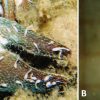 Branchiobdellidans
Branchiobdellidans Diplurans
Diplurans Science and Technology
Science and Technology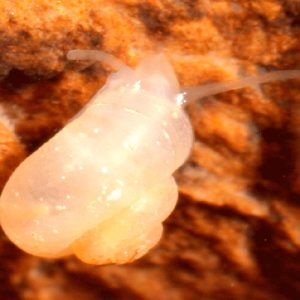 Foushee Cave Snail
Foushee Cave Snail 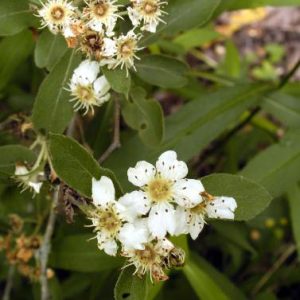 Konecny Grove Natural Area
Konecny Grove Natural Area 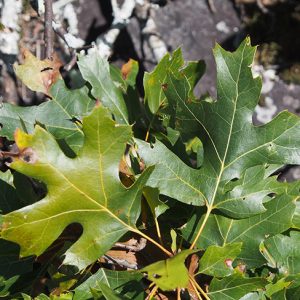 Maple Leaf Oak
Maple Leaf Oak 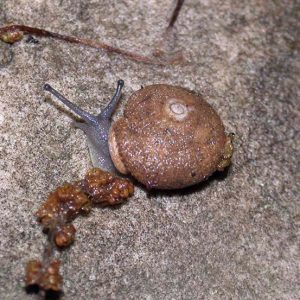 Mount Magazine Shagreen Snail
Mount Magazine Shagreen Snail 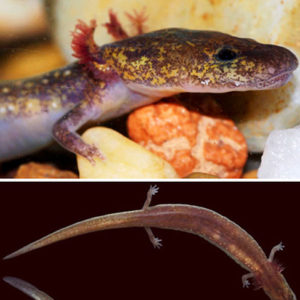 Ouachita Streambed Salamander
Ouachita Streambed Salamander 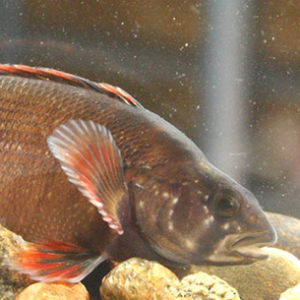 Yellowcheek Darter
Yellowcheek Darter 




Comments
No comments on this entry yet.